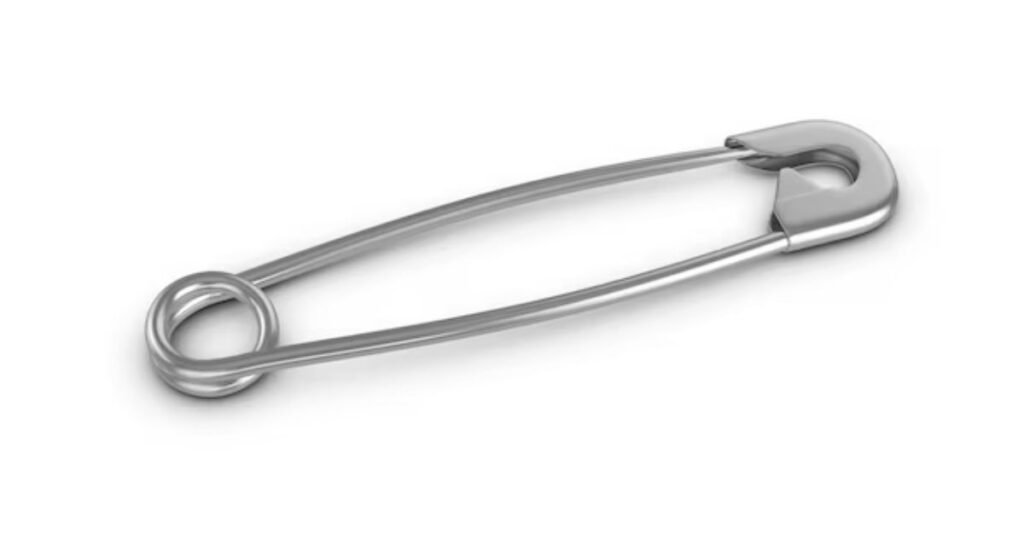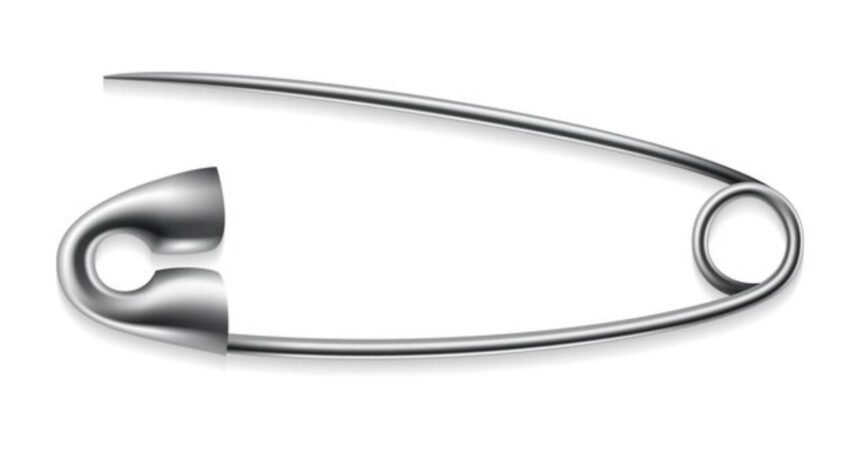Introduction
Safety pins might seem like simple objects, but their significance in our daily lives is undeniable. They have proven to be indispensable tools for various purposes, ranging from clothing repairs to jewelry-making and even emergency situations. Despite being a small item, the safety pin has a fascinating history and a wide range of practical uses.
In this comprehensive guide, we will delve into the world of safety pins, exploring their history, types, uses, benefits, challenges, and how they remain relevant in modern life. By the end of this article, you’ll gain a deeper appreciation for this humble yet essential item.
1. What is a Safety Pin?
A safety pin is a device used for fastening or securing items together. It consists of a metal pin, a clasp, and a spring mechanism that ensures safety by preventing accidental pricks. The clasp covers the sharp end, making it a safe and effective fastening tool for a variety of applications.
2. A Brief History of Safety Pins
The safety pin we use today has a rich history that dates back to ancient times. Early versions were made from bone and metal, serving as simple fasteners. The modern safety pin, however, was patented in 1849 by Walter Hunt, an American inventor. Hunt designed a coiled spring at one end, allowing the pin to be fastened securely and safely. He sold his patent for $400, but the safety pin soon became a household staple worldwide.
Key Milestones in Safety Pin Evolution:
- Ancient Greece: Early pins made from bone and bronze.
- 1849: Walter Hunt patents the modern safety pin.
- 20th Century: Safety pins gain popularity in fashion, first aid, and household use.
3. How Do Safety Pins Work?
Safety pins operate on a simple mechanical principle. When you press the pin, it opens, allowing you to insert it through fabric or other materials. The coiled spring creates tension that secures the clasp, ensuring the pin remains in place. This mechanism makes safety pins easy to use and highly effective for fastening materials together without causing injury.
4. Different Types of Safety Pins
Safety pins come in various types, each designed for specific purposes. Here are the most common types:
Standard Safety Pins
- The most widely used type
- Ideal for everyday tasks like fixing clothing or holding fabric together
Curved Safety Pins
- Feature a slight curve, making them perfect for quilting
- Easily pierce multiple layers of fabric
Coilless Safety Pins
- Have no coil, making them suitable for jewelry-making
- Prevent snagging on delicate materials
Heavy-Duty Safety Pins
- Made from thicker metal for added strength
- Used for securing heavy fabrics or objects
Decorative Safety Pins
- Feature colorful designs and embellishments
- Often used as accessories in fashion or crafts
5. The Importance of Safety Pins
Safety pins are important for a variety of reasons. They provide quick and easy solutions to problems like torn clothing, loose buttons, or temporary fixes. Their ability to perform multiple tasks makes them invaluable in everyday life. From holding fabric together to acting as a zipper pull, safety pins save the day in countless ways.

6. Benefits of Using Safety Pins
Safety pins offer numerous benefits, making them a must-have item in households, offices, and toolkits:
Versatility
- Can be used for various tasks, from clothing repairs to crafting projects
Affordability
- Inexpensive, making them accessible to everyone
Reusable
- Can be used multiple times, making them eco-friendly
Portable
- Small and lightweight, easy to carry around
Safe to Use
- The clasp design minimizes the risk of injury
7. Common Uses of Safety Pins
Safety pins have a multitude of uses, including but not limited to:
- Clothing Repairs: Fixing torn fabric, securing loose buttons, or hemming clothes
- Sewing: Holding fabric pieces together temporarily while sewing
- Jewelry Making: Creating unique jewelry designs like bracelets or necklaces
- Organizing: Keeping socks, gloves, or small items paired together
- Emergency Repairs: Acting as a quick fix for broken zippers or straps
8. Safety Pins in Fashion
Safety pins have made a significant impact on the fashion industry. They’re often used as statement pieces or embellishments on clothing and accessories. The punk movement of the 1970s popularized safety pins as a symbol of rebellion, and today, they continue to be a trendy addition to outfits.
Famous Fashion Moments Involving Safety Pins:
- Punk Movement: Safety pins became a staple of punk fashion, symbolizing nonconformity.
- Versace Dress: The iconic black dress held together with oversized gold safety pins, worn by Elizabeth Hurley in 1994.
9. DIY Crafts and Projects with Safety Pins
Safety pins are perfect for DIY enthusiasts. Their versatility makes them an excellent tool for various crafts and projects.
Popular DIY Projects:
- Safety Pin Bracelets: Create unique jewelry using beads and safety pins.
- Embellished T-Shirts: Attach safety pins to shirts for a personalized design.
- Home Décor: Use safety pins to create decorative wall hangings or curtains.
10. Safety Pins in Emergency Situations
Safety pins are invaluable during emergencies. They can be used in first-aid situations, such as securing bandages, slings, or splints. Safety pins can also temporarily fix clothing or gear, making them essential items in travel or camping kits.
Emergency Uses Include:
- Securing Bandages: Hold gauze or fabric in place over wounds
- Creating a Sling: Use a safety pin to secure a makeshift sling for injured arms
- Repairing Gear: Fix broken straps or zippers on bags and clothing
11. How to Use Safety Pins Safely
While safety pins are generally safe, there are a few precautions to keep in mind:
- Choose the Right Size: Use a pin appropriate for the task to avoid breakage
- Inspect for Rust: Discard rusty pins to prevent fabric damage or injury
- Store Properly: Keep safety pins in a secure container, out of reach of children
12. Environmental Impact of Safety Pins
Safety pins made from metal are reusable and recyclable, making them environmentally friendly. However, single-use plastic safety pins can contribute to waste. Opting for metal safety pins is a more sustainable choice.
Eco-Friendly Tips:
- Recycle Old Pins: Dispose of old safety pins at metal recycling facilities
- Choose Reusable Options: Invest in durable, high-quality safety pins
13. Challenges and Solutions When Using Safety Pins
Challenges:
- Rusting: Over time, safety pins can rust, especially if exposed to moisture.
- Breakage: Thin safety pins may bend or break under pressure.
Solutions:
- Use Stainless Steel Pins: These are rust-resistant and durable.
- Choose the Appropriate Size: Select heavy-duty pins for thicker materials.
14. Comparing Safety Pins with Other Fasteners
Safety pins aren’t the only fastening solution. Here’s how they compare to other options:
15. Alternatives to Safety Pins
If you’re looking for alternatives, consider:
- Velcro Strips: Ideal for securing fabric without pinholes
- Binder Clips: Useful for thicker materials or papers
- Tape: A temporary solution for fixing fabric or paper
16. Conclusion
Safety pins have stood the test of time due to their versatility, affordability, and practicality. They play a crucial role in fashion, crafting, emergency situations, and everyday tasks. Despite their simplicity, safety pins have a profound impact on our daily lives. Next time you use a safety pin, remember the countless ways this small tool can make life easier.
FAQs
1. Can safety pins be recycled?
Yes, most metal safety pins are recyclable. Check with your local recycling program for guidelines.
2. Are safety pins safe for children?
Safety pins should be kept away from young children due to the risk of injury or choking.
3. How can I prevent safety pins from rusting?
Store them in a dry place and avoid exposing them to moisture to prevent rusting.
4. What size safety pin should I use for quilting?
Curved safety pins, usually size 1 or 2, are ideal for quilting projects.
5. Can safety pins be used in jewelry-making?
Yes, coilless safety pins are perfect for jewelry-making as they don’t snag delicate materials.
With their numerous applications and undeniable benefits, safety pins prove that even the smallest tools can be incredibly valuable.








